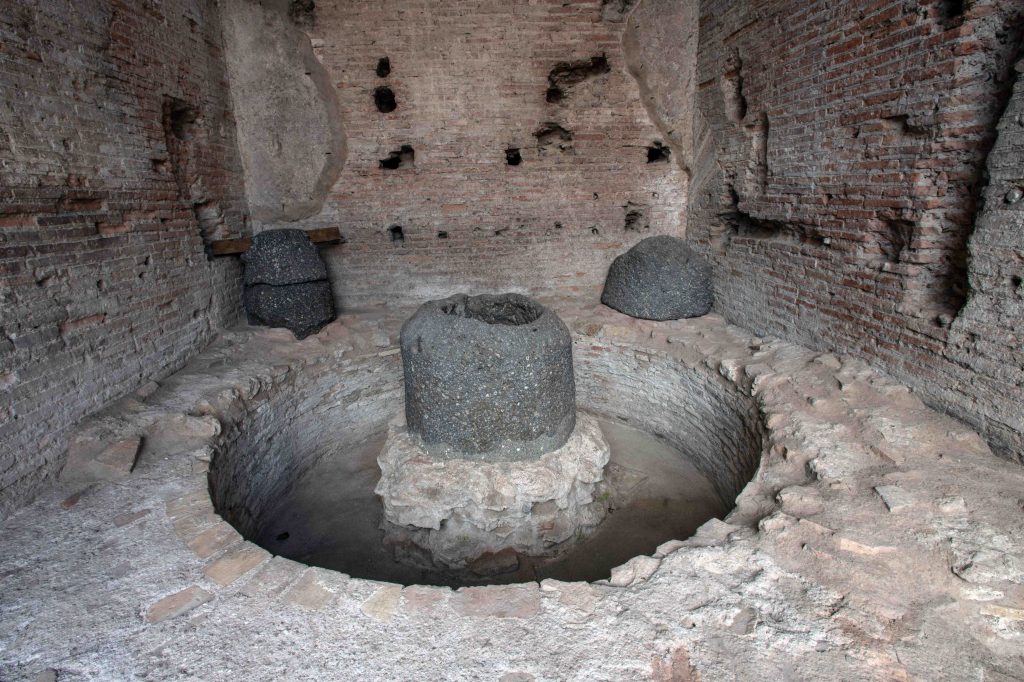The SE sector of the House of the Vestals and the museum layout
The House of the Vestals, or Atrium Vestae, was brought to light by Rodolfo Lanciani during excavations carried out in 1882-1884. In particular, the rooms, now open to the public, were discovered following the removal of the great wall enclosing the Farnese Gardens and the layers of subsoil, which were up to twenty metres thick compared to the ancient floor level.
Immediately after the discovery, work began to arrange the structures and the stone artefacts found, some of which were later exhibited in the Antiquarium Forense and are now displayed in the rooms of the SE sector, after careful restoration work that lasted from 2013 to 2020.
Recent archaeological investigations have provided new data on the events that affected the architectural complex.
The discovery of natural soil just below the imperial floor plans confirms that the eastern side of the Atrium south of the ancient Via Nova, before Nero’s renovations following the fire of 64 AD, was probably occupied by the sacred wood, the Lucus Vestae.
To the Neronian-Flavian phase can be ascribed some wall structures found during the most recent investigations in the SE sector, both in the so-called mezzanine and on the ground floor, which were later incorporated into the Trajanic structures datable to around 110-113 AD.
In the Trajanic phase the rooms on the ground floor (A-E) must have had residential and representative functions. Basically, until at least the fourth century AD, the lower floor remained almost unchanged.


Room D
Fragments of catillus and two metae belonging to more than one hourglass millstone (mola versatilis) made of lava stone.
Since its discovery, the room has been interpreted as a pistrinum, i.e. a mill, given its circular shape and the finding (probably inside or near it) of some fragments belonging to more than one hourglass millstones (mola versatilis) made of lava stone: two fragments of catillus and two fragmentary metae of different diameters. Despite the opinion commonly shared in the literature, which is generally associated with one of the functions performed by the Vestal Virgins, i.e. the preparation of the mola salsa, composed of spelt flour and salt, some technical-constructive considerations seem to exclude the correlation of this structure with the installation of a mill. It was probably in the early years of the 20th century that the meta was set up in the centre of the circular structure.
The mola salsa
According to the sources, the three Vestal Virgins would put the ears of spelt, far, into harvesters’ baskets every other day during the period from 7 to 14 May; they would then toast, crush and grind the ears. By adding cooked salt and coarse salt at the Lupercalia (15 February), the Vestalia (9 June) and the Ides of September (13 September), the Vestal Virgins made mola salsa, which was spread on all animals led to public sacrifice and on every offering made to the gods. From this preliminary rite of sacrifice comes the term immolate, literally to sprinkle with mola.

